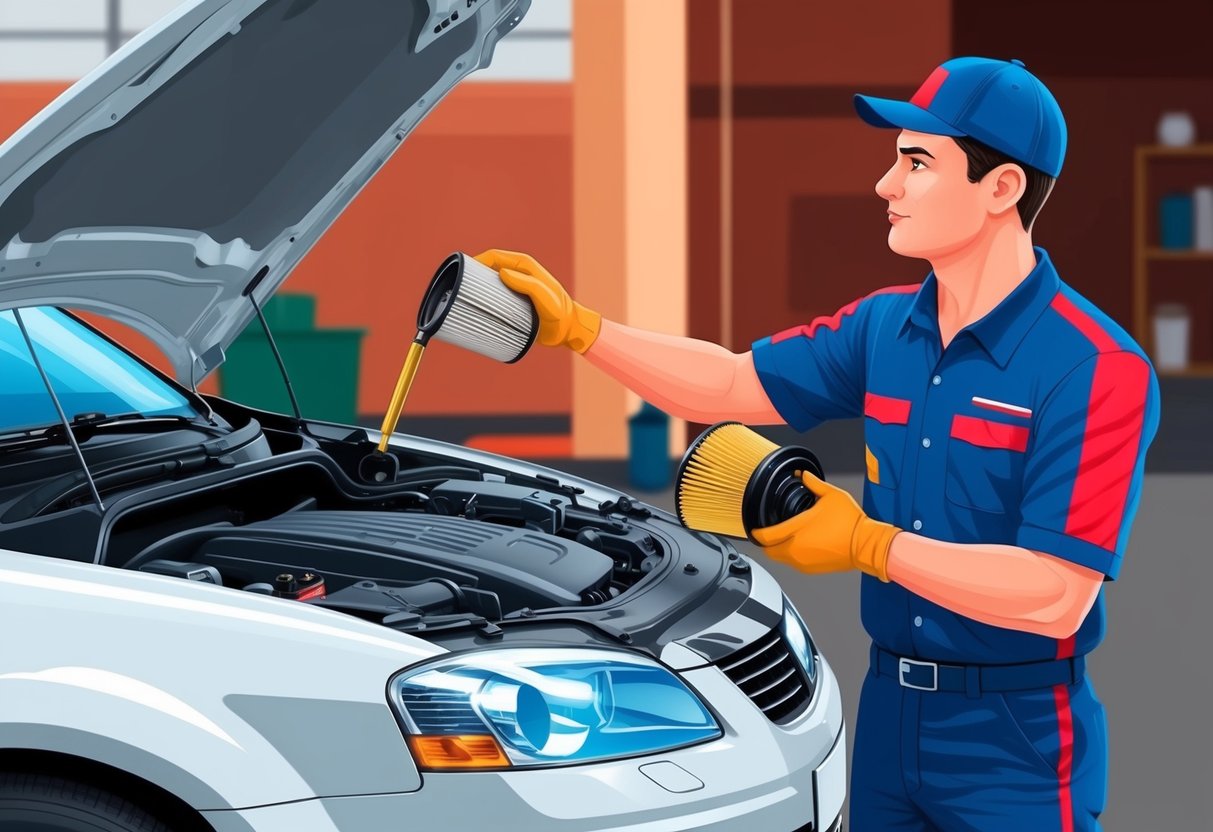
Essential Oil Changes for Engine Longevity
Consistent oil changes are a crucial part of any vehicle maintenance schedule. Fresh oil improves engine performance, reduces internal wear, and minimizes the risk of unexpected breakdowns or costly repairs.
Proper oil maintenance also supports fuel efficiency and helps protect any warranty coverage.
When to Change Your Oil
Most modern vehicles recommend oil changes every 5,000 to 7,500 miles, but intervals can vary based on driving conditions, vehicle age, and oil type. Short trips, stop-and-go traffic, and extreme temperatures may require more frequent service.
Manufacturers provide detailed recommendations in the owner’s manual, and it’s important to follow these guidelines. Driving with old or degraded oil increases friction and heats up engine parts, accelerating wear.
Mechanics often suggest checking the oil level monthly and watching for signs like darkened oil or loud engine noises. Regular oil changes keep harmful particles out and help prevent overheating, ultimately protecting engine longevity.
For more, see the importance of regular oil changes.
Choosing the Right Oil Type
Selecting the correct oil ensures the engine receives adequate lubrication and protection under all operating conditions. Options include conventional, synthetic, and synthetic blend oils, each designed for specific vehicle types and driving habits.
Synthetic oil offers better high-temperature stability and protection, making it ideal for newer engines or performance vehicles. Older cars or those with high mileage may benefit from high-mileage oil formulations that reduce leaks and minimize engine deposits.
Always use oil with the viscosity and specifications listed by the manufacturer. Using the wrong oil type can reduce efficiency and potentially void warranty coverage.
Oil labeled with API or ILSAC certifications meets industry standards for quality and performance.
DIY vs. Professional Oil Changes
Doing oil changes at home can save money and help owners become more familiar with their vehicle’s condition. DIY oil changes require tools like a wrench, oil catch pan, funnel, and proper disposal containers.
It is critical to dispose of used oil at a certified recycling center. Professional oil changes provide thorough inspections and ensure the correct oil and filters are used.
Shops often check other fluids, belts, and filters as part of a multi-point inspection. This can help catch additional maintenance needs early.
In some cases, frequent stop-and-go driving, extreme weather, or towing may require owners to schedule more frequent oil changes with a mechanic. For vehicles under warranty, maintaining service records of professional oil changes can help with future claims and resale value, as pointed out in guidelines on extending vehicle lifespan.
Tire Rotations and Maintenance Essentials
Proper tire rotations and ongoing maintenance are fundamental for tire longevity, consistent vehicle handling, and fuel efficiency. Regular attention to tire wear, rotation schedules, and alignment helps prevent costly repairs and maximizes safety.
Recognizing Tire Wear Patterns
Understanding tire wear patterns gives valuable insight into the state of a vehicle’s suspension and alignment. Uneven or rapid wear, such as more tread loss on one edge or in the center, can signal underinflation, overinflation, or misalignment.
Uneven tire wear also increases the risk of blowouts and reduces overall traction, which affects braking and cornering. Drivers should check for feathering, cupping, or bald spots, especially on the front tires, as these signs may indicate a need for immediate maintenance.
Spotting these patterns early allows for correction through alignment or rotation. Regular visual inspections, especially paired with a tread depth gauge, help detect unusual wear before it impacts safety.
A good rule is the “penny test”—insert a penny into the tread grooves with Lincoln’s head facing down. If the top of his head is visible, the tires need replacing.
Rotating Tires for Even Wear
Tire rotation is one of the most important elements of any car maintenance plan. By systematically changing each tire’s position on the vehicle, owners ensure tread wears down at an even rate.
Even wear maintains reliable traction and extends the functional lifespan of the tires. For most vehicles, a rotation every 5,000 to 8,000 miles is recommended, but this can vary based on manufacturer guidelines.
Common rotation patterns include front-to-rear and cross methods, depending on whether the vehicle is front-wheel, rear-wheel, or all-wheel drive. Consistent rotations also support better fuel efficiency and a smoother ride.
Following a thorough schedule minimizes the risk of developing dangerous bald spots or weak areas. For detailed, step-by-step best practices, see this guide to tire rotation and balancing.
Checking Tire Pressure and Alignment
Maintaining the correct tire pressure is essential for tire health and optimal fuel economy. Underinflated tires flex more, build up heat, and wear out faster, while overinflated ones can reduce grip and promote uneven center wear.
Tire experts recommend checking pressure at least once a month, using a reliable gauge, and always when the tires are cold. Alignment ensures all four tires meet the road at proper angles, preventing the vehicle from pulling to one side and promoting even tread wear.
Misaligned wheels cause premature tire wear, reduced handling ability, and may lower fuel efficiency. Drivers may notice symptoms like steering wheel vibration, vehicle drift, or squealing tires.
Routine alignment checks, especially after hitting curbs or potholes, keep handling precise and tires wearing evenly. Staying on top of tire pressure, balancing, and alignment minimizes long-term costs and boosts safety year-round.